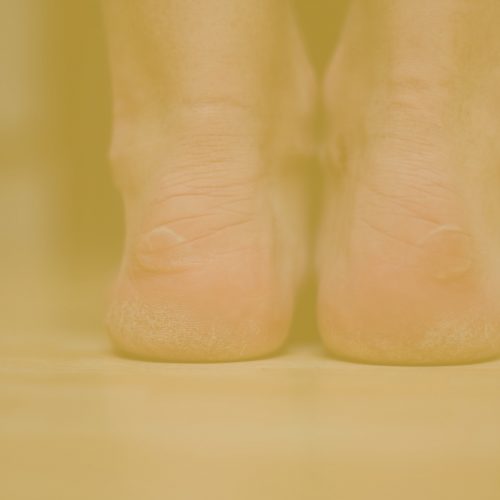People of all ages frequently complain of experiencing discomfort in their legs. It is possible for it to be brought on by a wide range of factors, from relatively minor traumas to more significant medical issues. But how can you tell if the discomfort is merely a passing sensation or if it’s an indication of anything more concerning? Let’s go into more detail about the matter.
Common Causes of Leg Pain
Leg pain can be a result of various factors, each with its own set of symptoms, causes, and treatments. Let’s delve deeper into the six common causes mentioned earlier:
1. Muscle Strain
Muscle strains, often pulled muscles, occur when muscle fibres are overstretched or torn. This can result from:
- Overexertion: Pushing your muscles beyond their limit while lifting heavy weights or engaging in high-intensity workouts.
- Improper Technique: Using incorrect form during exercises or physical activities can strain muscles.
- Fatigue: Tired muscles are more susceptible to strains.
- Symptoms: Sharp pain, swelling, bruising, and limited muscle movement.
2. Infections
While not as common, infections can lead to leg pain. They can be caused by:
- Bacterial Infections: Such as cellulitis, which affects the skin’s surface and underlying tissues.
- Viral Infections: Some viruses can cause muscle pain and inflammation.
- Symptoms: Redness, warmth, swelling, fever, and sometimes pus or discharge.
3. Soft Tissue Injury
These injuries involve damage to the muscles, ligaments, and tendons.
- Sprains: Caused by overstretching or tearing ligaments.
- Bruises or Contusions: Result from trauma to the tissue, causing blood vessels to break and leak blood into the surrounding area.
- Symptoms: Pain, swelling, bruising, and limited joint movement.
4. Circulation Issues
Poor circulation can lead to various conditions that cause leg pain.
- Deep Vein Thrombosis (DVT): A blood clot in a deep vein, usually in the legs. It can be life-threatening if the clot travels to the lungs.
- Peripheral Artery Disease (PAD): Narrowing of the peripheral arteries, often in the legs, due to atherosclerosis.
- Symptoms: Pain, swelling, warmth in the affected leg, and skin discolouration.
5. Neurological Concerns
Issues with the nerves can lead to leg pain.
- Sciatica: Caused by irritation or compression of the sciatic nerve. It results in pain that radiates from the lower back down one leg.
- Peripheral Neuropathy: Damage to the peripheral nerves, often due to diabetes or other conditions.
- Symptoms: Sharp, jabbing pain, numbness, tingling, or weakness in the legs.
6. Bony Pathology
Issues with the bones can also cause leg pain.
- Fractures: Breaks or cracks in the bones, often due to trauma.
- Osteoporosis: A condition where bones become weak and brittle, increasing the risk of fractures.
- Bone Infections (Osteomyelitis): An infection in the bone, often caused by bacteria.
- Symptoms: Persistent pain, swelling, redness, and warmth at the site of the issue.
Understanding the root cause of leg pain is crucial for effective treatment. If you experience persistent or severe leg pain, it’s essential to consult a healthcare practitioner for a proper diagnosis and appropriate care.
Warning Signs to Look Out For
While leg pain can often be attributed to minor causes, certain warning signs shouldn’t be ignored. Recognising these signs can prevent complications and ensure timely medical intervention. Let’s delve deeper into the warning signs mentioned:
1. Color Changes
Any noticeable discolouration in the legs can be indicative of underlying issues.
- Redness: This can be a sign of inflammation, infection, or a reaction to an insect bite or sting.
- Blueness or Cyanosis: Indicates a lack of oxygenated blood reaching the tissues. This can be due to circulation problems, such as a blood clot or peripheral artery disease.
- Paleness: Reduced blood flow to the area, possibly due to arterial blockages or other circulatory issues.
- Recommendation: Any sudden or unexplained colour changes should be evaluated by a healthcare practitioner.
2. Swelling
Swelling, or edema in the legs, can arise from various causes.
- Localised Swelling: This can result from an injury, infection, or inflammation in a specific area.
- Generalised Swelling: Might be due to heart failure, kidney disease, or medications.
- Deep Vein Thrombosis (DVT): Swelling in one leg, especially if accompanied by pain, warmth, and colour changes, can be a sign of DVT.
- Recommendation: Persistent or sudden swelling should be addressed immediately, especially if only one leg is affected.
3. Persistent Pain
While occasional leg pain is common, persistent pain is a cause for concern.
- Duration: Pain that doesn’t improve with rest or lasts longer than a few days should be evaluated.
- Intensity: Severe pain, even if short-lived, can indicate a serious issue, such as a fracture or blood clot.
- Recommendation: Don’t ignore persistent or severe pain. Consult a medical professional for a proper diagnosis.
4. Fever
A fever accompanying leg pain can be a sign of an underlying infection.
- Cellulitis: A bacterial skin infection that can cause redness, swelling, warmth, and fever.
- Osteomyelitis: A bone infection that can result in pain, fever, and other systemic symptoms.
- Recommendation: If you experience leg pain and a fever, especially if there are other signs of infection, seek medical attention promptly.
5. Numbness or Tingling
These sensations can be indicative of nerve-related issues.
- Sciatica: Compression or irritation of the sciatic nerve can lead to pain, numbness, and tingling that radiates from the lower back to the leg.
- Peripheral Neuropathy: Conditions like diabetes can lead to nerve damage, resulting in numbness, tingling, and leg pain.
- Recommendation: A healthcare practitioner should evaluate any unexplained or persistent numbness or tingling to determine the cause and appropriate treatment.
Prevention and Self-Care

1. Stay Active
Regular physical activity is essential for maintaining healthy legs and preventing many causes of leg pain.
- Cardiovascular Exercise: Activities like walking, jogging, cycling, and swimming can improve circulation, strengthen leg muscles, and enhance overall leg health.
- Strength Training: Incorporating resistance exercises can help build muscle strength, reducing the risk of injuries and strains.
- Flexibility: Engaging in activities like yoga or pilates can improve flexibility, reducing the risk of muscle strains and other soft tissue injuries.
- Recommendation: Aim for at least 150 minutes of moderate-intensity aerobic activity or 75 minutes of vigorous-intensity aerobic activity each week, combined with muscle-strengthening activities two or more days a week.
2. Maintain a Healthy Weight
Carrying excess weight can put additional strain on your legs, leading to various issues.
- Joint Stress: Being overweight can increase the stress on your knee, hip, and ankle joints, increasing the risk of osteoarthritis.
- Circulation: Excess weight can also affect circulation, leading to conditions like varicose veins or peripheral artery disease.
- Recommendation: Adopt a balanced diet rich in whole foods, and monitor calorie intake. Regular exercise can also help in weight management.
3. Stay Hydrated
Proper hydration is crucial for muscle function and preventing cramps.
- Muscle Function: Water is essential for transporting nutrients to muscle cells, aiding muscle contraction, and removing waste products.
- Preventing Cramps: Dehydration can lead to muscle cramps, especially during or after exercise.
- Recommendation: Aim to drink at least eight glasses (about 2 litres) of water daily, more if you’re active or in hot climates.
4. Stretch Regularly
Stretching can help prevent muscle strains and improve flexibility.
- Dynamic Stretching: Before any physical activity, engage in dynamic stretches to prepare your muscles. Examples include leg swings or walking lunges.
- Static Stretching: After exercising, perform static stretches to relax and lengthen your muscles. This can include hamstring stretches, calf stretches, and quad stretches.
- Recommendation: Incorporate stretching into your daily routine, especially before and after physical activities. Hold each stretch for 15-30 seconds, ensuring you don’t feel any pain.
When to Seek Medical Attention
Recognising when to seek medical attention for leg pain ensures timely intervention and prevents potential complications. While occasional aches and pains might be a normal part of life, especially after physical exertion, there are certain situations where consulting a healthcare professional becomes imperative.
If the pain in your leg is persistent and doesn’t improve even after rest or with over-the-counter pain relievers, it’s a clear sign that you should see a doctor. Similarly, any sudden onset of severe pain warrants medical evaluation, even if it’s short-lived. Other concerning symptoms include noticeable changes in the colour of your leg, swelling, especially if it’s localised to one leg, or if you experience a fever alongside the pain. These could indicate more serious conditions such as deep vein thrombosis, infections, or circulatory issues.
Additionally, a professional should evaluate sensations like numbness or tingling, which might suggest nerve-related problems. It’s always better to err on the side of caution. Consulting a healthcare practitioner can provide clarity and peace of mind if you’re ever in doubt about the severity or cause of your leg pain.
Conclusion
Leg discomfort is an annoyance, but paying attention to what your body is telling you is critical. Identifying the warning indications of a more serious ailment and seeking medical assistance at the appropriate time can make all the difference. Always put your health and well-being ahead of everything else.









